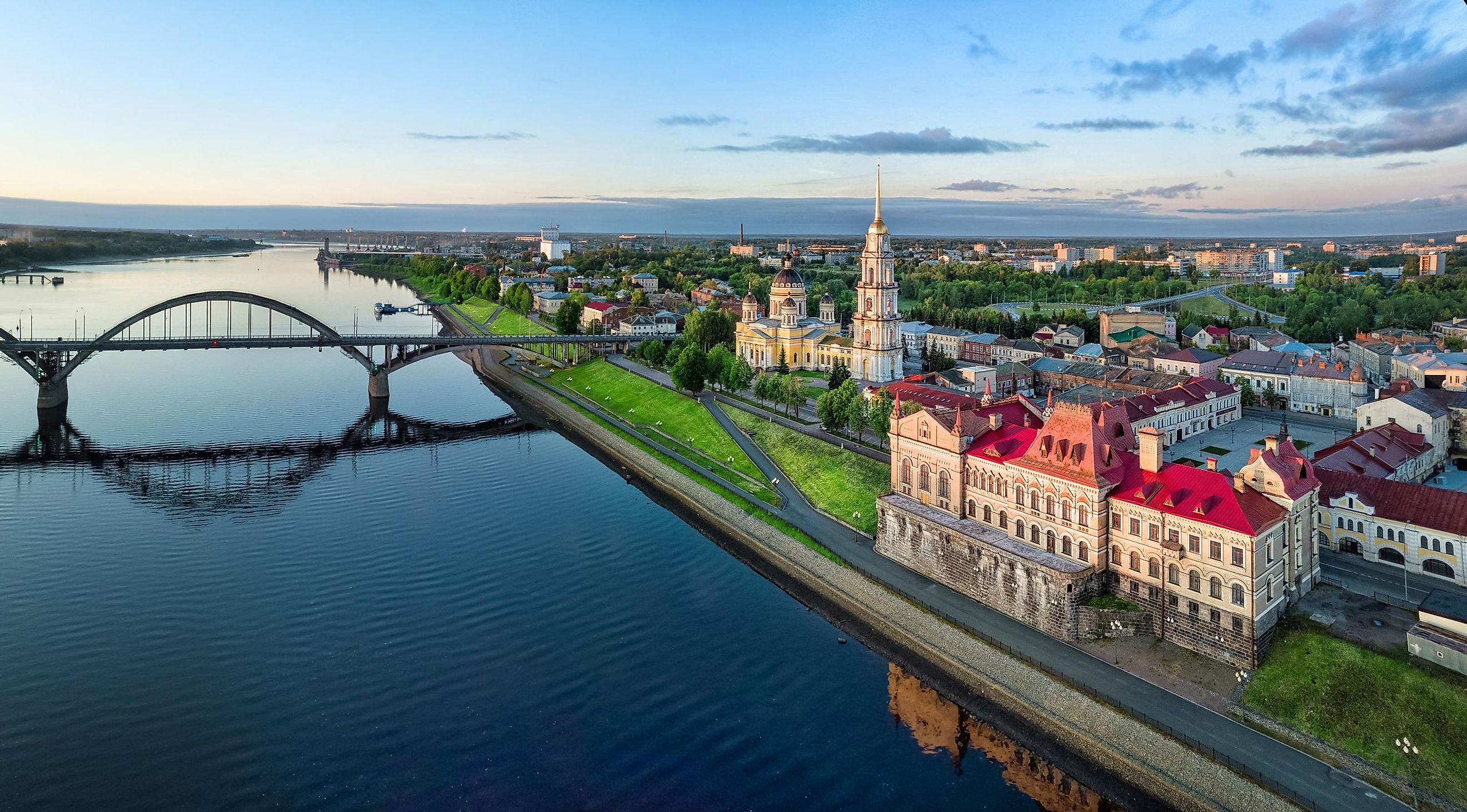
Major Rivers Of Europe
Rivers are defined as flowing bodies of freshwater that drain into seas, oceans, lakes, and reservoirs. Rivers serve as important sources of drinking water, irrigation, transportation, hydroelectric power generation, and various recreational activities such as boating and swimming. There are numerous rivers as well as their tributaries that flow through the countries of the European continent. This article highlights some of the most significant European rivers.
Contents:
- Danube River
- Dnieper River
- Don River
- Elbe River
- Loire River
- Oder River
- Po River
- Rhine River
- Rhône River
- River Shannon
- Tagus River
- Volga River
Danube River
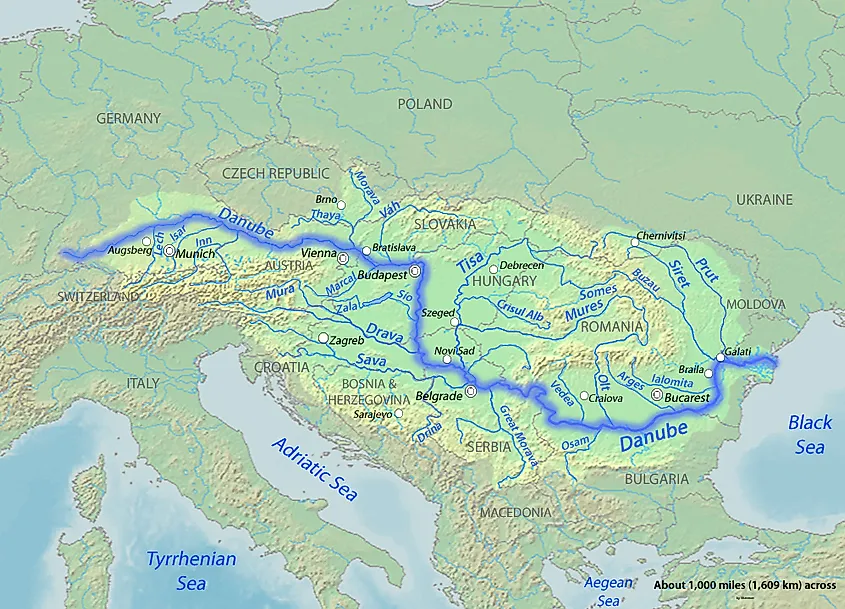
The Danube River has a length of about 2,850 km and is considered the second-longest river in the European continent. It rises at the confluence of the Brigach and Breg rivers, near the German town of Donaueschingen in the Black Forest region of Germany. The river flows across major portions of central and southeastern Europe, passing through the 10 European nations of Germany, Austria, Romania, Hungary, Bulgaria, Serbia, Croatia, Slovakia, Ukraine, and Moldova. There are many tributaries of the Danube river including Lech, Isar, Inn, Enns, Rába, Drava, Mlava, etc. The Danube River finally drains into the Black Sea via the Danube Delta.
The Danube River serves as one of the most significant commercial waterways on the European continent and acts as an important source of drinking water, hydroelectric power generation, irrigation, fishing, and navigation, for the 10 countries that share its waters. The 171 km-long Rhine-Main-Danube Canal connects the Danube River with the North Sea.
Dnieper River
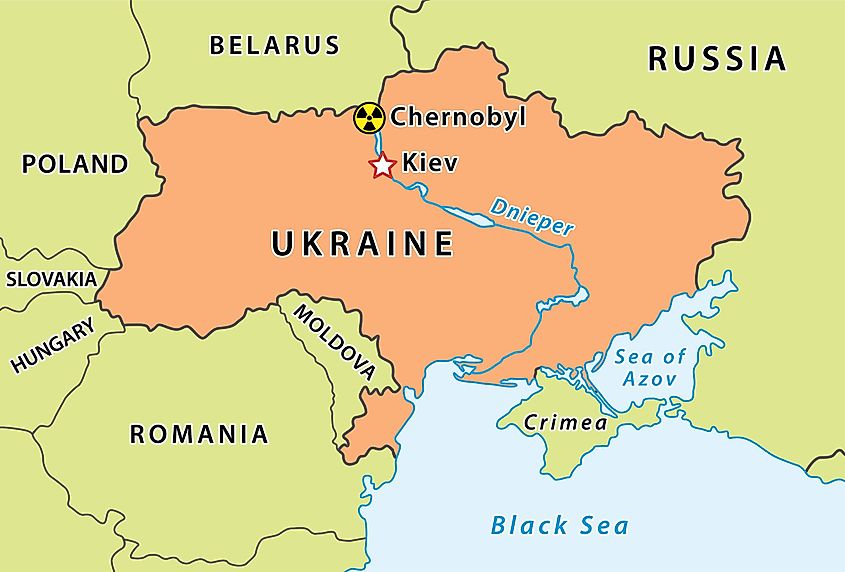
The Dnieper River has a length of about 2,200 km and is the fourth-longest river in Europe. It originates in the Valdai Hills located near the Russian city of Smolensk. The river then flows in a southerly direction through the western part of the Russian Federation and the European nations of Belarus and Ukraine before draining into the Black Sea. It has been estimated that there are more than 32,000 tributaries of the Dnieper River. Some of these tributaries are Berezina, Bilozerka, Drut, Desna, Prypiat, Sozh, Myareya, Samara, Sula, and Vyazma.
Don River
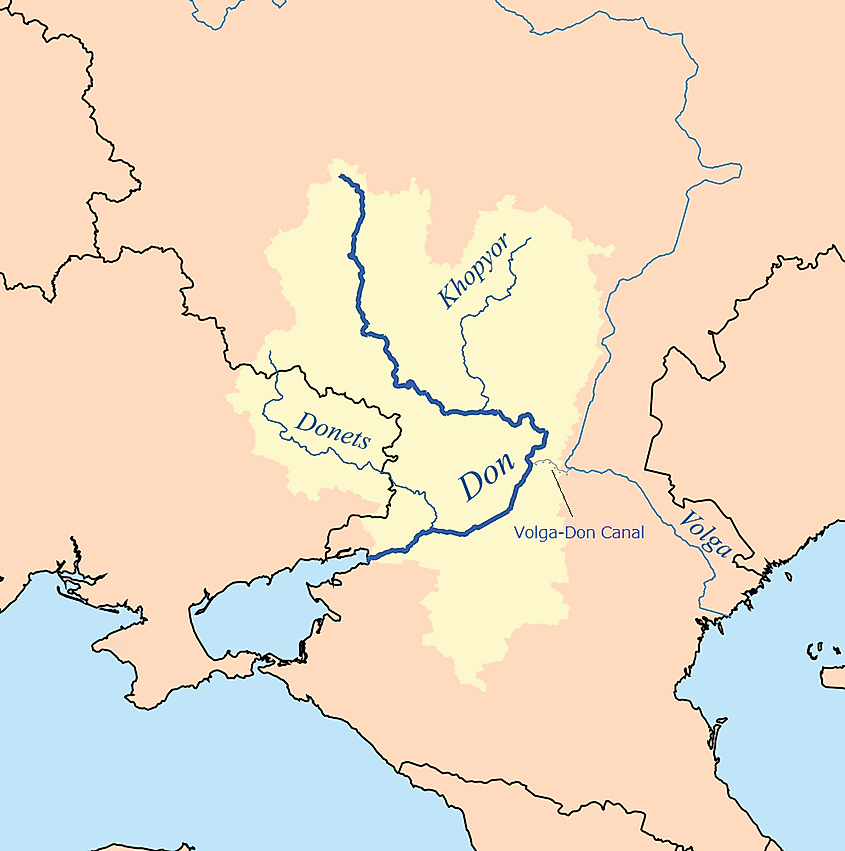
The Don River has a length of about 1,870 km and is the fifth-longest river in Europe. It originates in the Russian Tula oblast near the city of Novomoskovsk. It then flows in a southeasterly direction towards the Volga river, but abruptly turns in the west to join the Gulf of Taganrog in the Sea of Azov. Some of the tributaries of the Don River include Chir, Seversky Donets, Chyornaya Kalitva, Krasivaya Mecha, Khopyor, and Medveditsa. The 101 km-long Lenin Volga-Don Shipping Canal links the Don River with the Volga River.
Elbe River
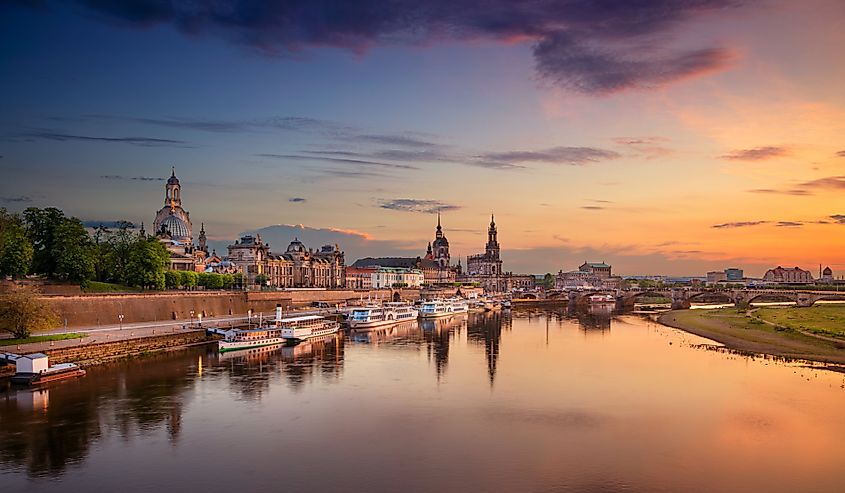
The Elbe River has a length of about 1,112-km and originates in the southern part of the Krkonose Mountains which is located near the boundary between Poland and the Czech Republic. It then flows through Bohemia in the northwestern part of the Czech Republic and enters Germany through its eastern side and finally ends in the North Sea near the town of Cuxhaven. Some of the major tributaries of the Elbe River include Saale, Mulde, Ohre, Vltava, Schwarze Elster, Havel, and Alster.
Loire River
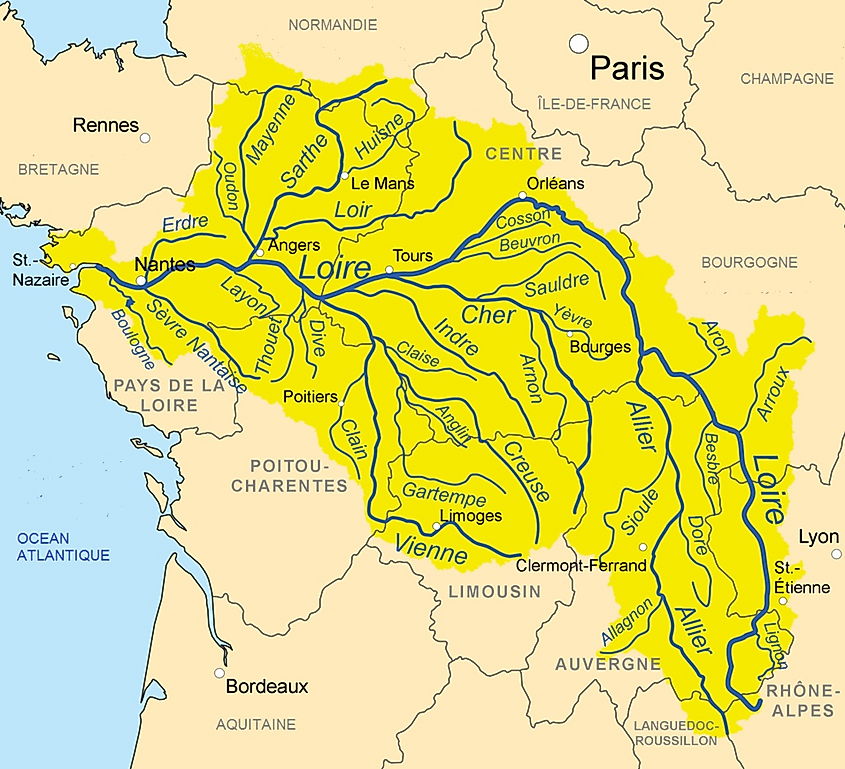
The Loire River has a length of about 1,006 km and is recognized as France’s longest river. It rises from the foothills of the Massif Central in the Cévennes mountain range which is located in the French department of Ardéche. It then flows across the northern and western areas of France and finally drains into the Bay of Biscay. Some of the major tributaries of the Loire river include Erdre, Nièvre, Maine, Cher, Vienne, Sèvre Nantaise, Allier and Indre. Located in the central part of the Loire river valley is the Forest of Orléans which encompasses an area of 94,480 acres and is considered as the largest forest in France. About 164 bird species and 57 fish species are found in the Loire River basin.
Oder River
The Oder River has a length of about 840 km and is the second-longest river in Poland. It originates in the rugged mountains of the eastern Czech Republic and flows through the western part of Poland where it forms a border between Poland and Germany. The main branch of the river empties into the Szczecin Lagoon and its other three branches, the Peene, Świna, and Dziwna drains into the Baltic Sea.
Po River
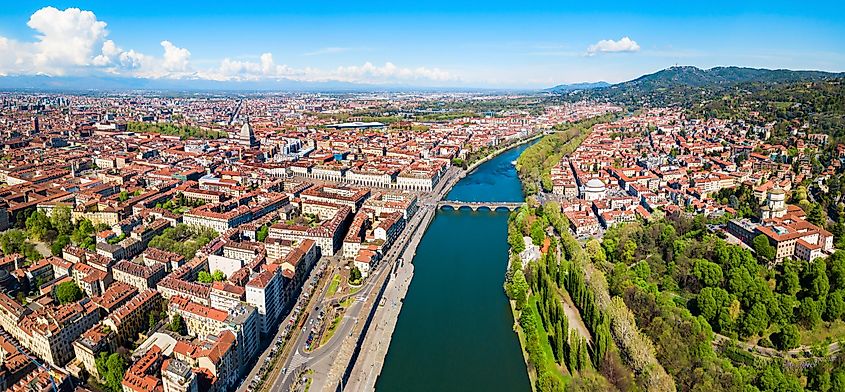
The Po River has a length of about 652 km and is Italy’s longest river. It rises from the upper reaches of the Cottian Alps and flows from west to east across the northern portion of Italy and eventually drains into the Adriatic Sea. The Po River flows through several major Italian cities including Cremona, Milan, Ferrara, Piacenza, and Turin. The cities of Milan and Turin, which serve as major industrial centers in the country, utilize the waters of the Po River for industrial purposes. The river is fed by a total of 141 tributaries such as Rotaldo, Pellice, Grana del Monferrato, Nure, Adda, Chisola, and Dora Riparia.
Rhine River
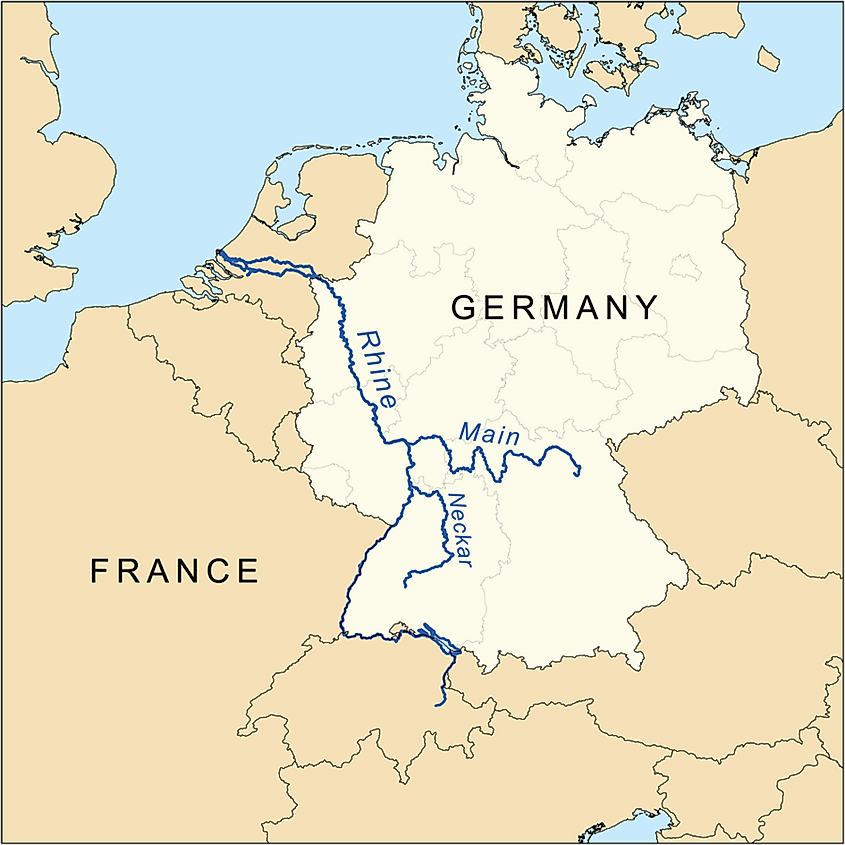
The Rhine River has a length of about 1,230 km and originates from the southeastern part of the Swiss Alps in the Canton of Grisons, Switzerland. The river then flows northwards through the large Rhine Valley and forms the international boundary between Switzerland and Liechtenstein and later the boundary between Switzerland and Austria. In Austria, the river flows into Lake Constance. The river then flows westwards out of the lake as High Rhine and forms Switzerland’s northeastern border with Germany. The river then falls over 22 m and is then known as the Rhine Falls. In the city of Basel in Switzerland, the river turns in the northward direction and is referred to as the Upper Rhine. This part of the river forms the boundary between Germany and France. Then, the Rhine flows into the Netherlands where it is divided into three branches (Rhine-Meuse-Scheldt). The river then finally empties into the North Sea. Some of the notable tributaries of the Rhine river include Aare, Tamina, Moselle, Erft, Rein da Tuma, Plessur, Rotach, and Wiese. The principal cities that are located along the Rhine river include Düsseldorf, Basel, Rotterdam, Cologne, and Strasbourg.
Rhône River
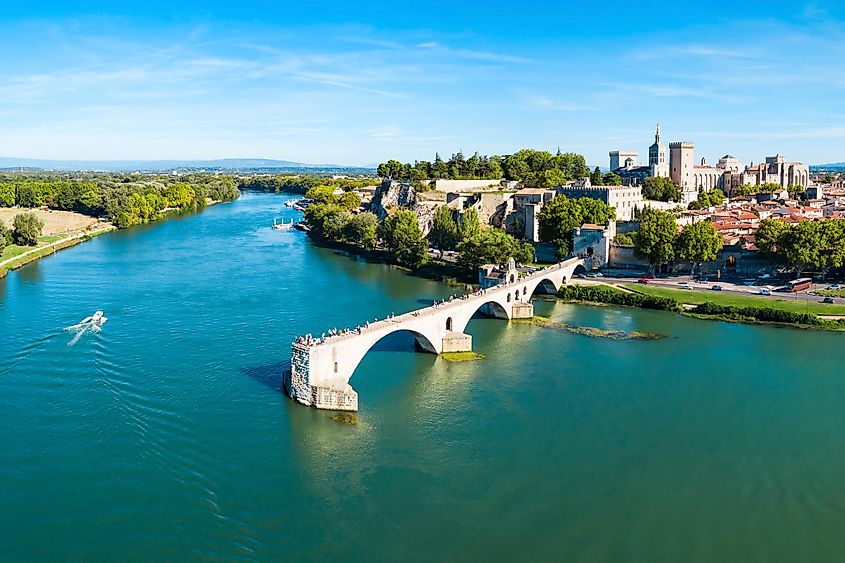
The Rhône River has a length of about 813 km and originates in the Rhône Glacier of the Swiss Alps. This fast-flowing river flows into the eastern end of Lake Geneva and then moves in the southward direction through the southeastern part of France. Before emptying into the Mediterranean Sea, the Rhone river divides into two sections, namely the Great Rhône and Little Rhône, at the French city of Arles.
River Shannon
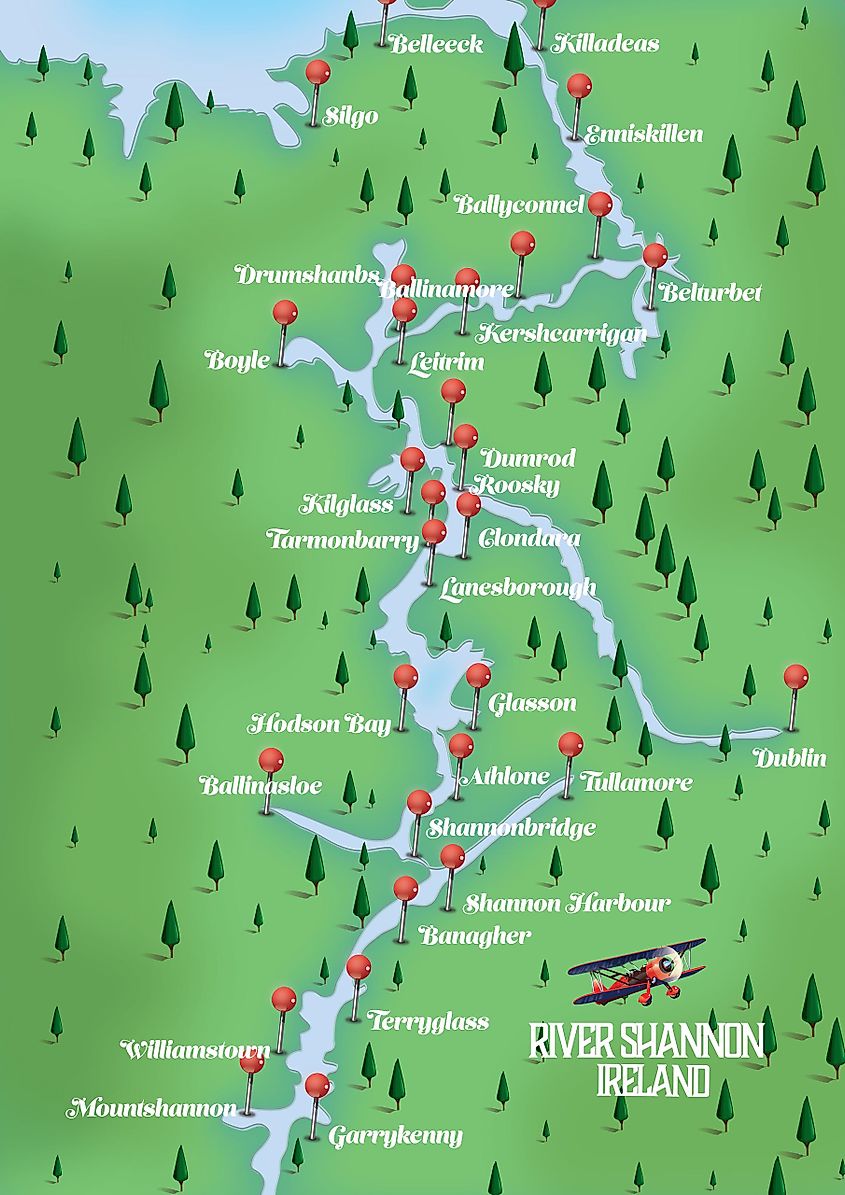
The Shannon River has a length of about 360.5 km and is the Republic of Ireland’s longest river. It rises from the Shannon Pot, a small pool on the slopes of the Cuilcagh Mountain. The river then flows southwards through a series of lakes and turns west to eventually drain into the Atlantic Ocean via the Shannon Estuary. The river passes through 11 Irish counties that are situated in the massive Shannon River Basin that covers about one-fifth of the total land area of Ireland.
Tagus River
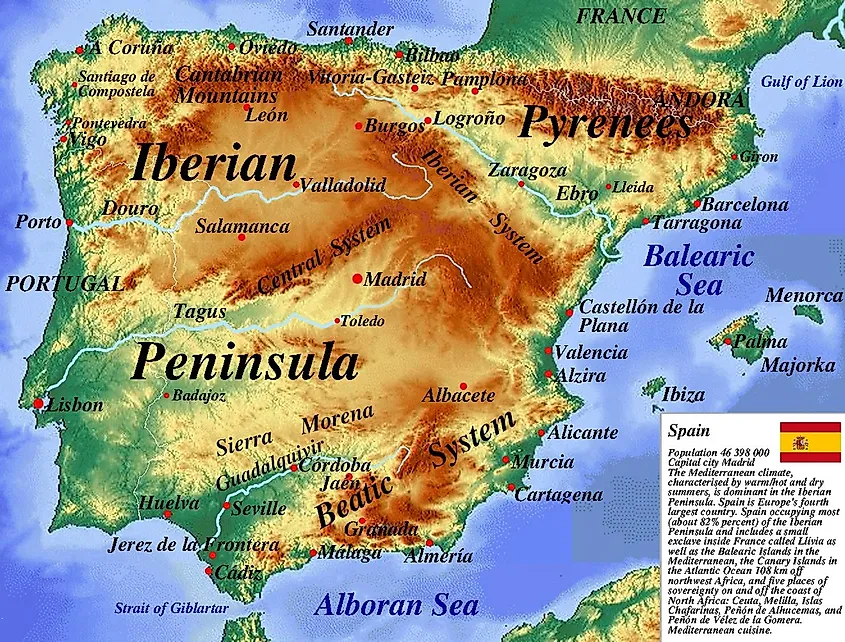
The Tagus River measures about 1,007 km long and is the Iberian Peninsula’s longest river. It originates from the Montes Universales mountain range in the eastern part of Spain and flows westwards across the country. It then enters Portugal and flows in the southwestward direction before emptying into the Atlantic Ocean near the Portuguese capital city of Lisbon. Some of the major tributaries of the Tagus river include Gallo, Alberche, Jarama, Alagón, Algodor, Guadiela, Ibor, and Almonte.
Volga River
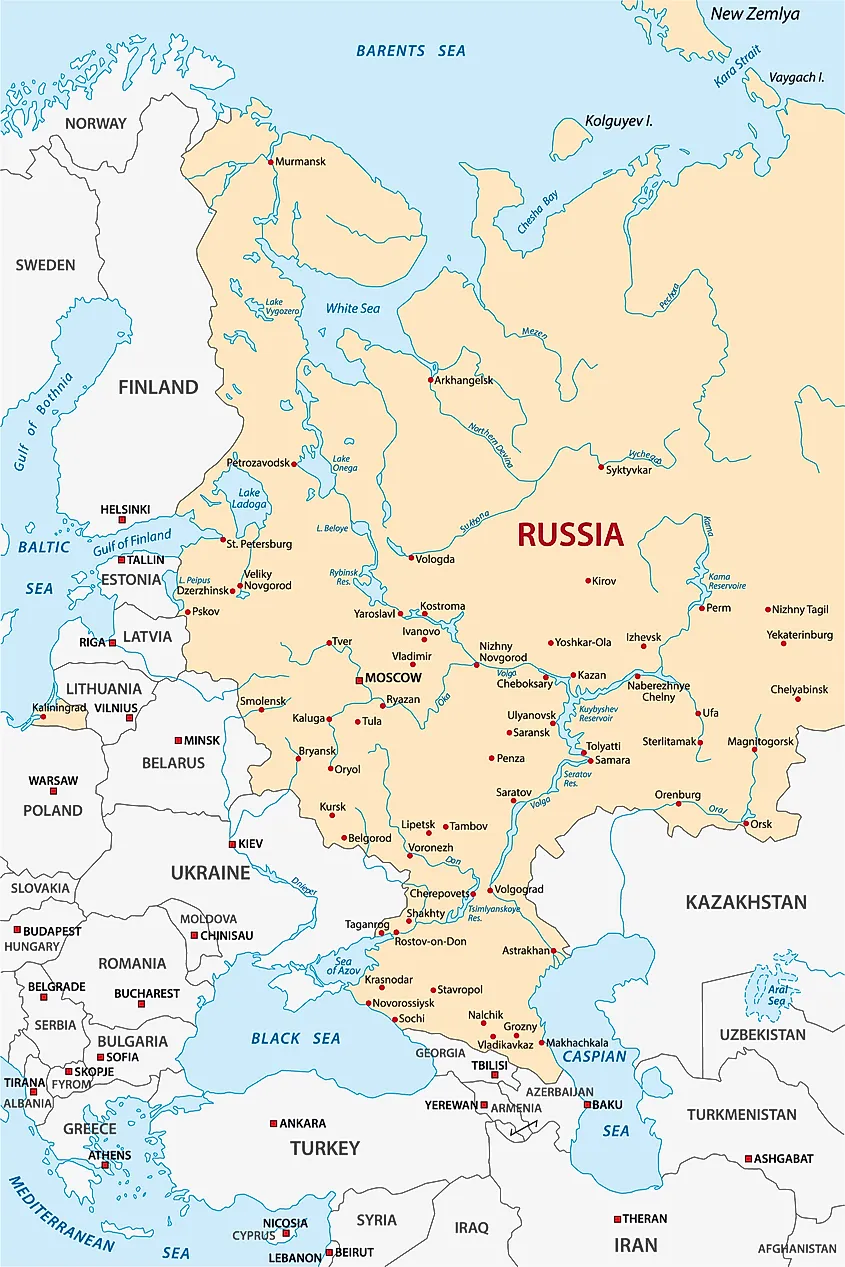
The Volga River is about 3,531 km in length and is the longest river on the European continent. The Volga is also widely considered as the National River of the Russian Federation. It originates in the Valdai Hills and flows through the central part of Russia to its southern part where it eventually drains into the Caspian Sea. The Volga River is fed by numerous tributaries, notable among which are Sura, Oka, Vetluga, and Kama. During Soviet rule, many hydroelectric reservoirs were built on the Volga River. Some of these reservoirs are Volgograd, Saratov, Uglich, Gorky, and Cheboksary.










